How to use Poverty Relief Loans to find your Irish ancestors
4-5 minute read
By Niall Cullen | February 23, 2016
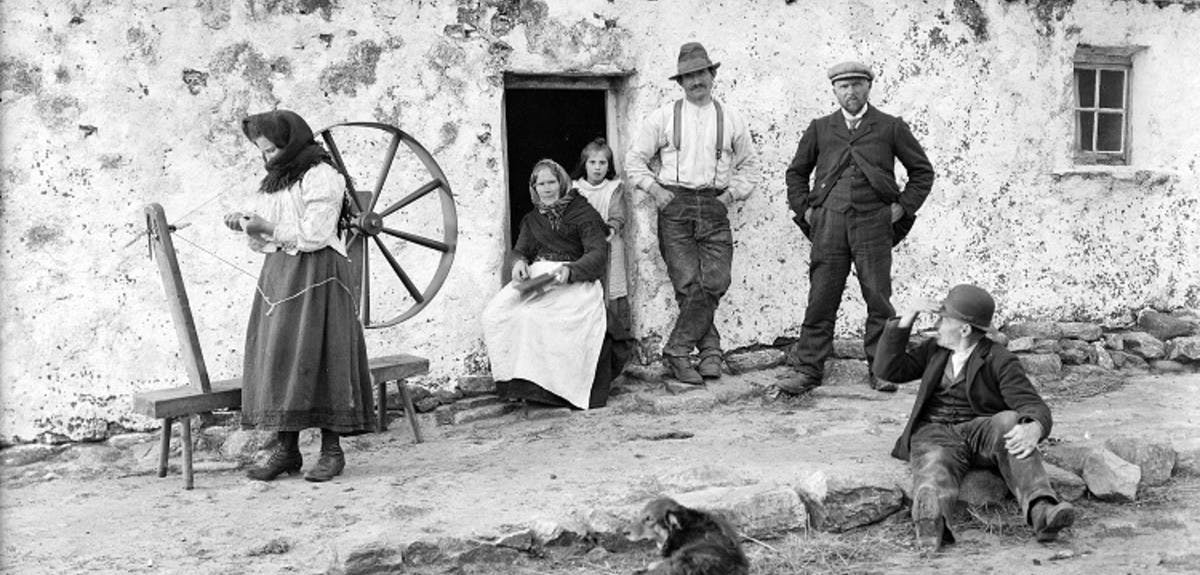
The Ireland, Poverty Relief Loans, 1824-1871 on Findmypast are a crucial asset to anyone tracing their Irish family history. Many of the names you will find within these records are people who were often missed by official and government records. You might even be able to open up entire branches of your family tree and discover connections which were never possible before.
Start exploring your own family tree
The records are also significant because they include the years of the Great Famine and record those living on Ireland's Western Seaboard who were hit the worst by the catastrophe.
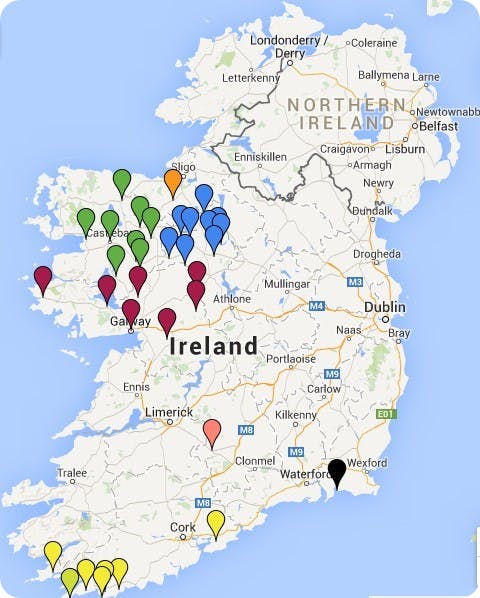
When looking at records it is always important to understand what you are reading and to understand the reason the records exist. This will help you to be able to analyse them more thoroughly and perhaps discover more names or a connection you may otherwise have missed. This short guide explains the Irish Poverty Relief Loans, what you will find in the records and how best to search or browse the records.
The Poverty Relief Loans are a collection of papers related to the Irish Reproductive Loan Fund. The fund was created in 1822 to provide short term, low interest loans to the 'industrious poor.' By industrious it is meant people who will use the loan for reproductive purposes, for example, a fisherman who needs money to repair a boat or a farmer who wants to purchase new seeds. The fund did not require any capital or physical backing, instead they required that each borrower have two guarantors sign for the loan. In some records the role of guarantor is also called security or sureties. These guarantors were often neighbours or close relatives. If the borrower defaulted on the loan then responsibility for repayment would lie with the guarantors.
Searching the records
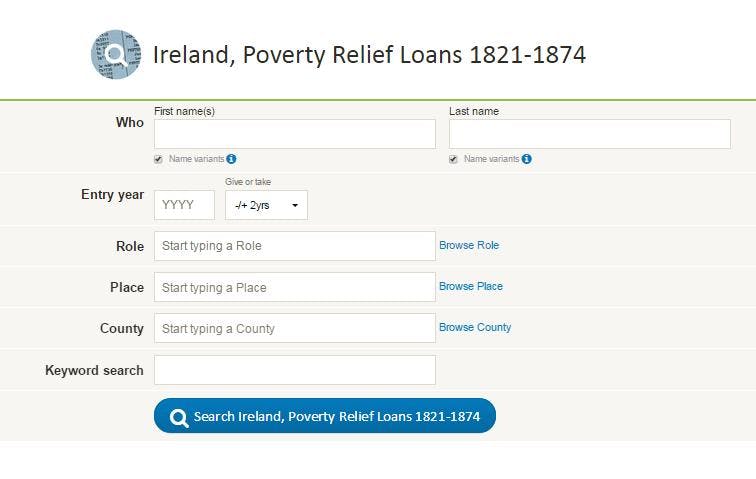
You have the ability to search by Name and then narrow the search by their role (Borrower or Guarantor/Witness) and then even further by location. It is not necessary to complete all the fields. You can start your search just by a Name and then continue to narrow the results using the other options.
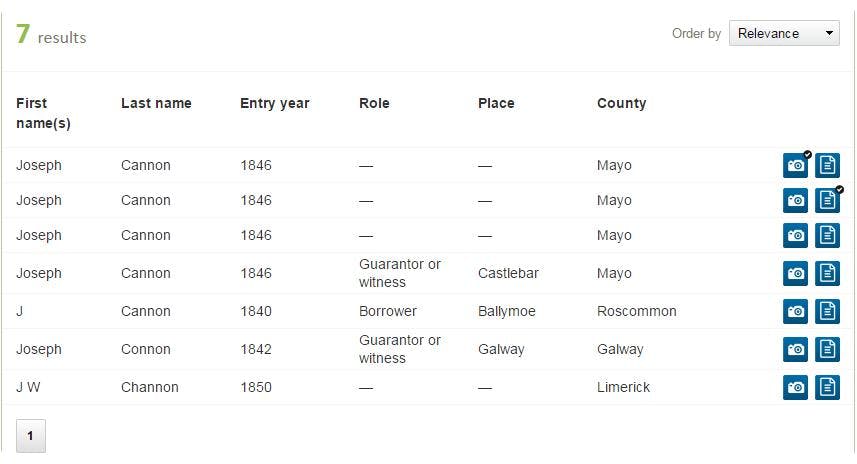
The search results reveal the individual's First and Last name, entry year, which is the year that the record was created, their role and then the location. As we can see there are seven results for Joseph Cannon, four from County Mayo. It is not unusual to find more than one record for an individual. Some people applied for loans on more than one occasion or they may have been a borrower for one loan and then a guarantor on another. They may also appear in Returns to the Clerk of the Peace or in the county board minutes. The different type of records will give you different information. Once you have found the record you want you can either download the image or save the record to your Findmypast Family Tree.
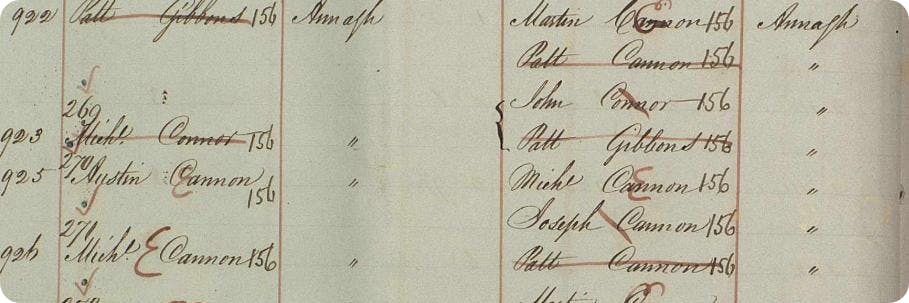
First we can find Joseph Cannon of Annugh in a loan ledger. He is listed as a guarantor for Austin Cannon along with Mick Cannon.
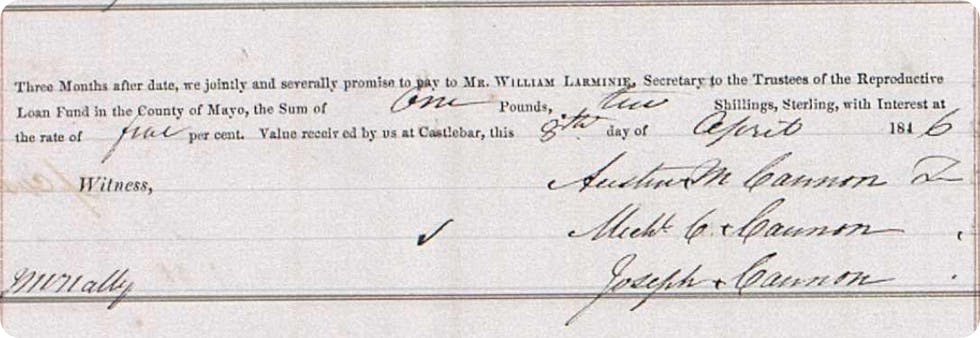
Next we can find the three names again on the loan application. Austin Cannon is listed as the borrower and Joseph Cannon and Mick Cannon are listed as the guarantors. We also find that Austin has borrowed one pound and two shillings on 8 April 1846.
In the next two images we discover what happened to both Joseph and Austin Cannon. First you can see that Joseph Cannon lived in the townland of Annugh at the time of the loan, but went to America in March 1847.

On the same document we can find that Austin Cannon went to England in July 1846, only a few months after receiving the loan. To confirm that these are the same people from the previous loan papers we see that the loan was taken on 8 April 1846.

The trail does not end there. Once we have discovered that Joseph Cannon went to America we search from him using the United States records on Findmypast. To help with the search we calculated his birth year to be either 1825 or earlier. How did we do that? In order to sign for a loan as part of the Irish Reproductive Loan Fund, a person was required to be at least 21. Therefore, if Joseph signed in 1846 he had to be born 1825 or earlier.
Here we have found Joseph again in the US Census 1850. He is living in Coffee, Tennesse, birthplace is Ireland, age 26, listed as a labourer.

From this example you can see that there are many different types of documents available within the Poverty Relief Funds.
Not all the outcomes found within the records are as fortunate as Austin and Joseph Cannon's. In the image below from the Returns to the Clerk of the Peace in County Galway, the records states: 'Patt Killalea lives at Slowhill the date in Colume 3, in poor circumstances and after until July 1848, when he died there. Mick Flynn lived the dates in Column 3 in poor circumstances, at Slowhill and after until he died there in Summer 1848.'

If you want to explore the documents further you can record the Archive Reference and use Poverty Relief Loans Browse. This search allows you to browse through the volumes of papers from beginning to end. This option is very useful for those who are interested in the county meetings and minutes.
Related articles recommended for you
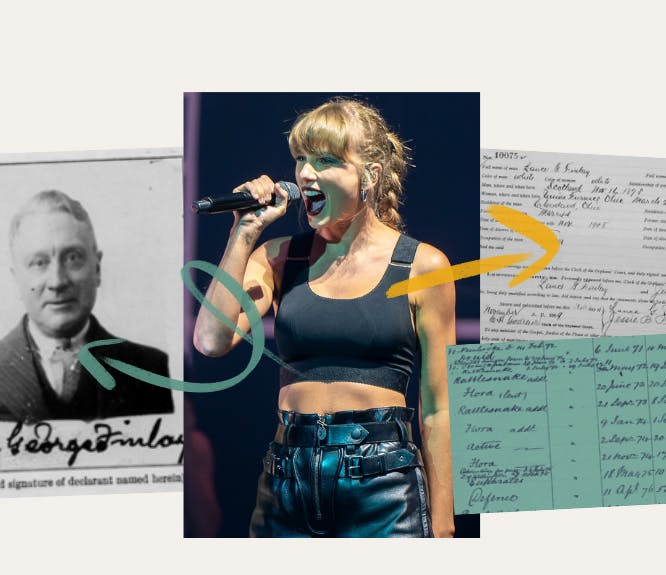
Taylor Swift’s family tree shines with love, heartbreak and the triumph of the human spirit
Discoveries
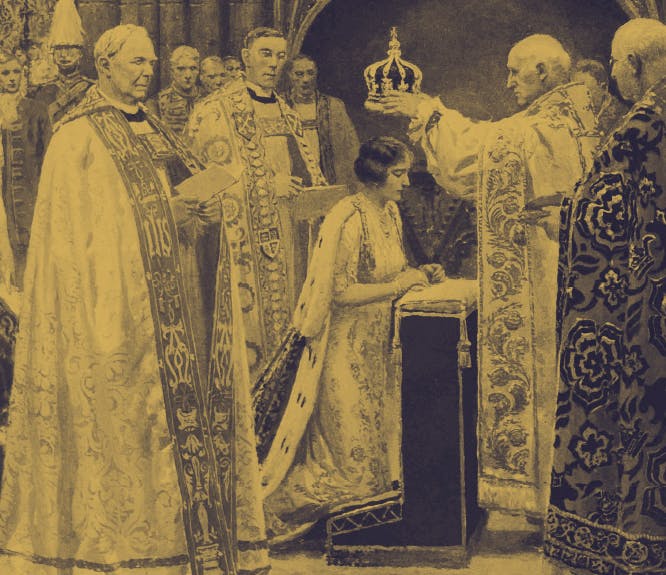
Discover the recent history of this important ceremony
History Hub
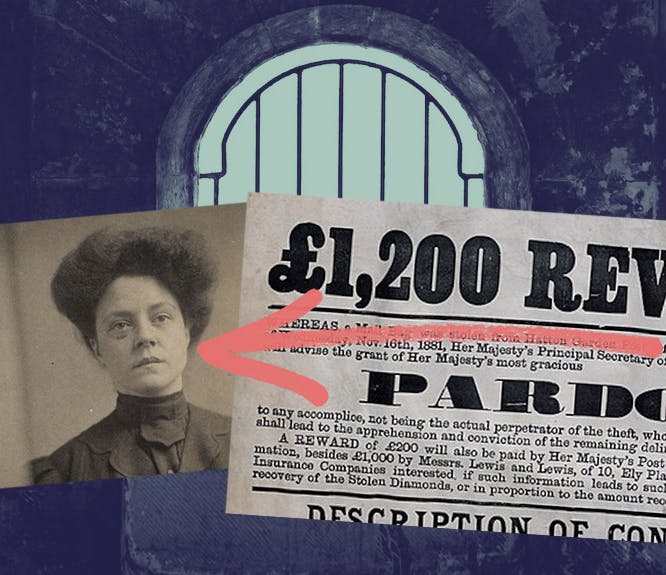
From public intoxication to petty theft, here are our top 5 books for researching criminal history in your family tree
Help Hub

